Trees in the desert, although sparse, play a crucial role in the ecosystem, offering shade, shelter, and sustenance in harsh environments. Despite the aridity, several species have adapted to thrive in these challenging conditions, displaying resilience and unique characteristics. From the towering saguaros to the delicate Joshua trees, desert landscapes harbor a diverse array of tree species, each with its own story of survival.
Different Types of Trees in the Desert
Red Pancake
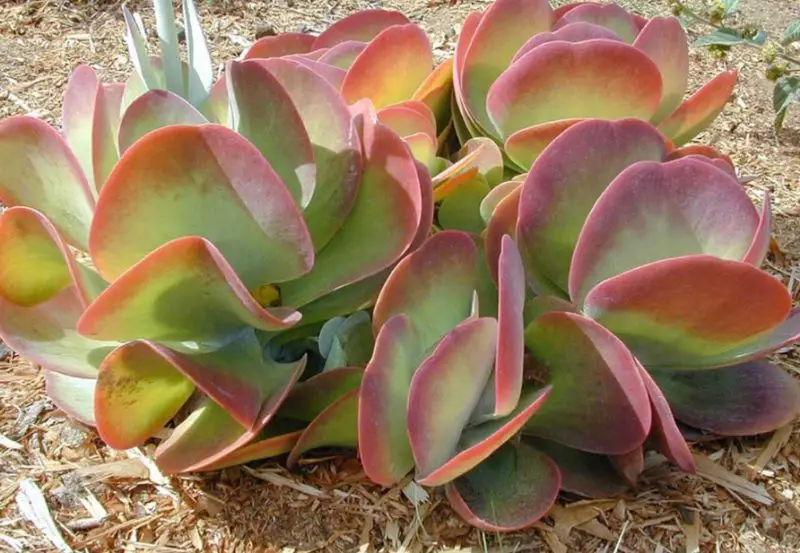
The Red Pancake (Kalanchoe thyrsiflora), also known as paddle plant or desert cabbage, features large, round, blue-green leaves tinged with red on the edges. Thriving in full sun with minimal watering, its fleshy leaves retain moisture, maintaining their vibrant color in hot desert climates.
Fox Tail Agave
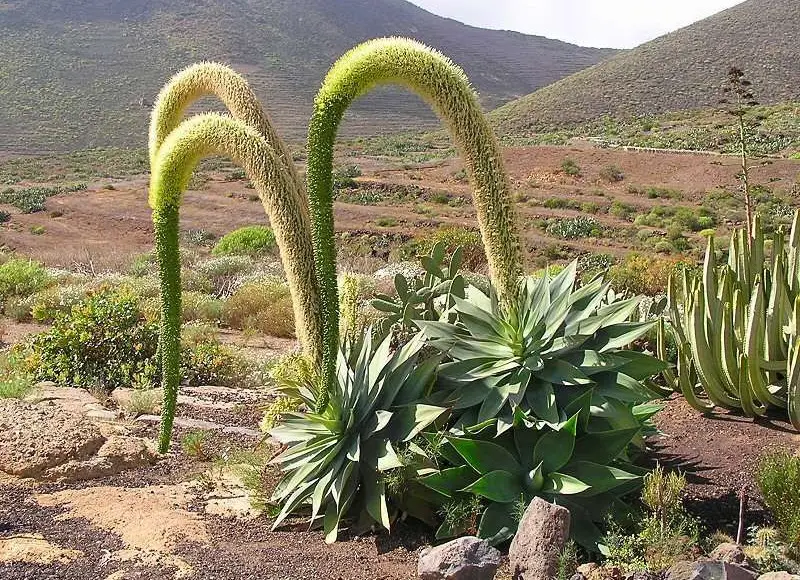
Fox Tail Agave (Agave attenuata), flourishing in hot, arid southwestern deserts, often resembles Aloe, but belongs to a distinct family. With thick bluish-green leaves forming a spiky clump, it’s a favorite for desert gardens, storing moisture to withstand dry conditions. Popular in ornamental gardens, they thrive in both arid and subtropical climates.
Mexican Feather Grass
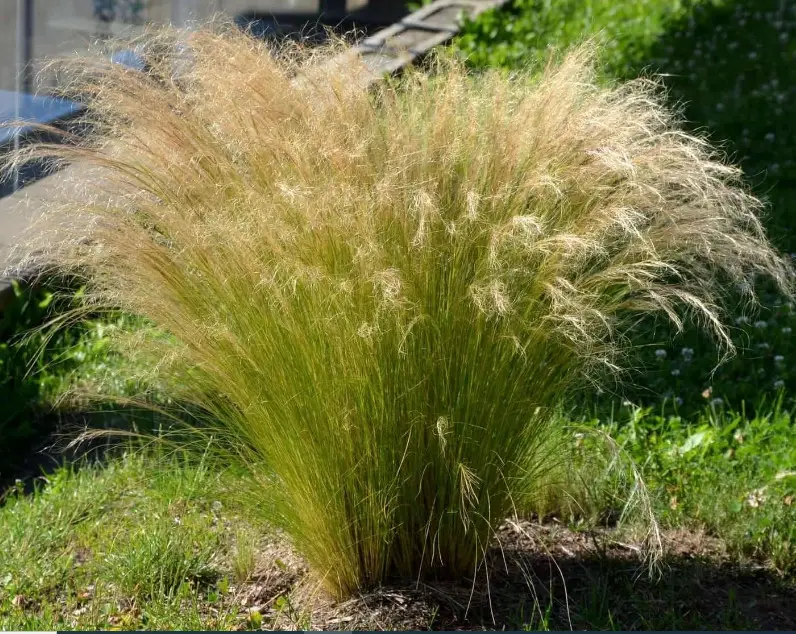
Mexican Feather Grass (Stipa tenuissima), also known as fine-leaved nassella or fine-stem needlegrass, flourishes in full sun and endures desert drought. With wispy, delicate blades, it enhances rock gardens and desert landscapes with its ornamental appeal.
Tumbleweed
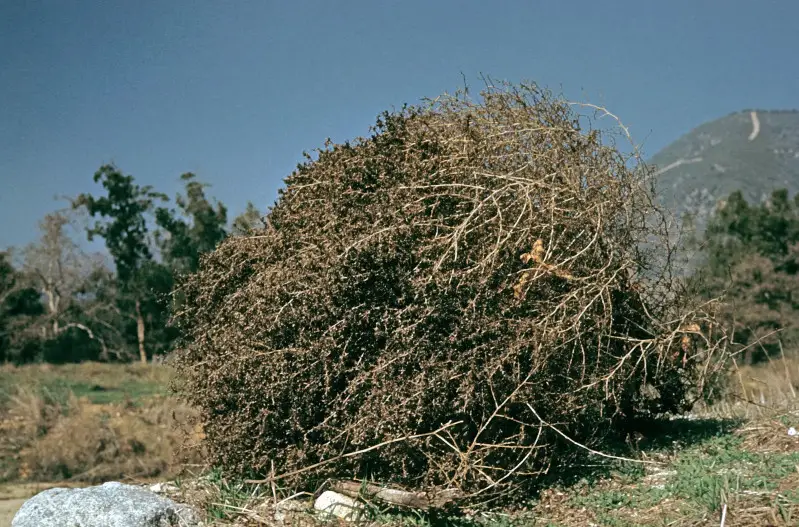
Tumbleweed, an iconic sight in Western movies, forms from various desert plants, detaching from their roots to roll across barren landscapes. Also known as Russian thistle, it disperses seeds as it travels, aiding its invasive spread.
Desert Marigold
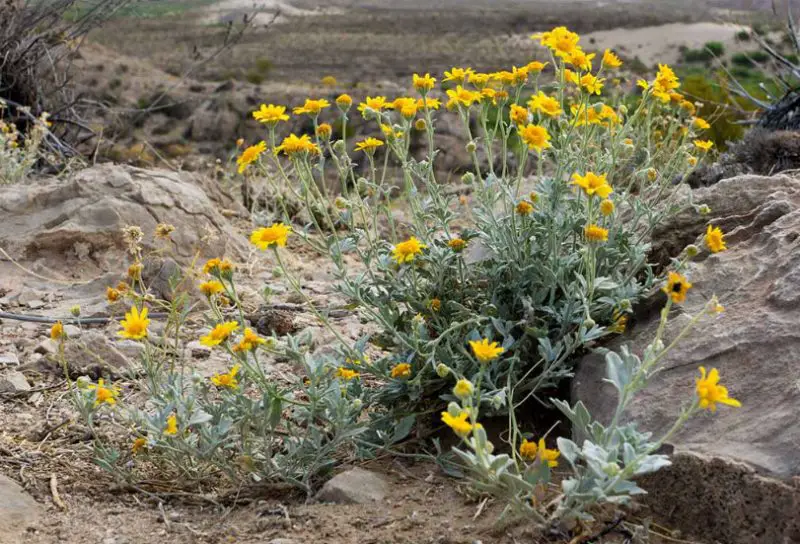
Desert Marigolds (Baileya), perennials native to Mexican, Utah, California, and Arizona deserts, brighten arid landscapes with their vibrant yellow blooms. Thriving in sunny conditions, they require minimal maintenance, offering continuous flowering from spring through the hottest months.
Desert Lily
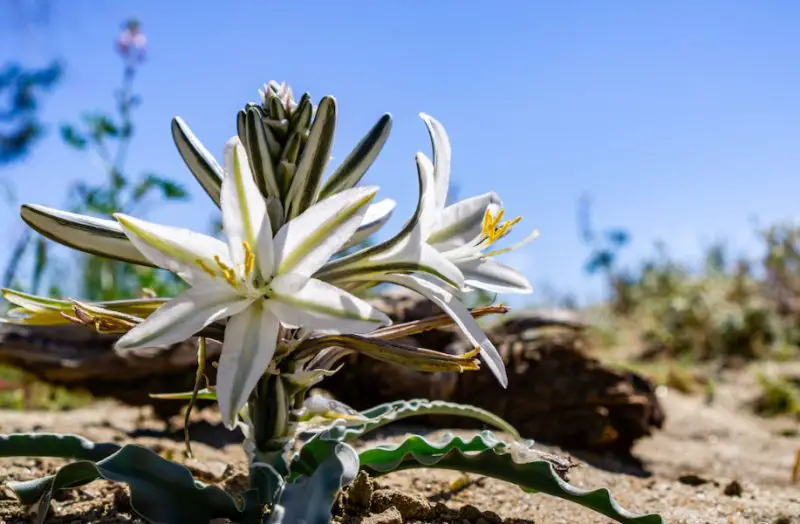
The Desert Lily (Hesperocallis), although not a true lily, thrives in hot desert climates of the Southwest and Mexico. Related to agave plants, it produces large white lily-like flowers atop bluish-gray stems, reaching up to 6 ft. tall.
Jumping Cholla
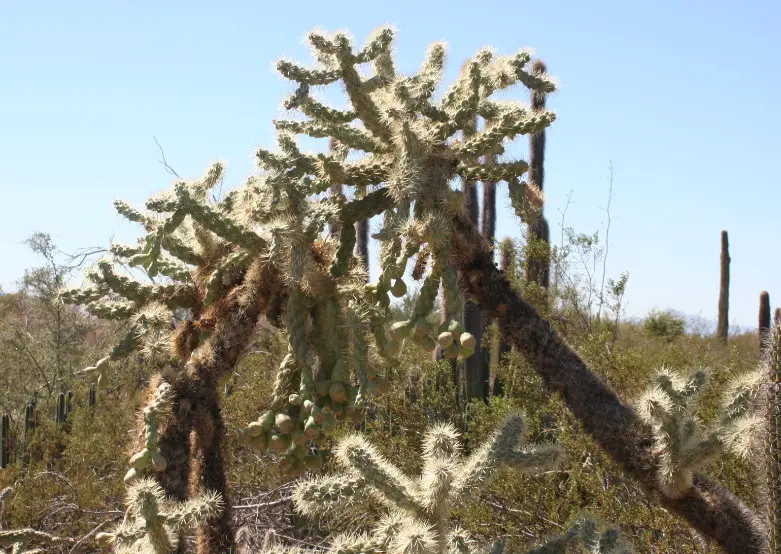
The Jumping Cholla (Cylindropuntia fulgida), resembling a tree-cactus hybrid, thrives in the Sonoran Desert of Arizona and California. With a thick trunk and branch-like growth covered in painful barbs, it reaches about 13 ft. tall, bearing pink and white flowers with lavender markings.
Ocotillo

Ocotillo (Fouquieria splendens), known for its long green stems, is a desert cactus also called vine cactus or desert coral. Found in Arizona, Texas, New Mexico, and California, it transforms after rainfall, with barren stems swelling, lush leaves emerging, and vibrant crimson flowers blooming.
Yellow Palo Verde
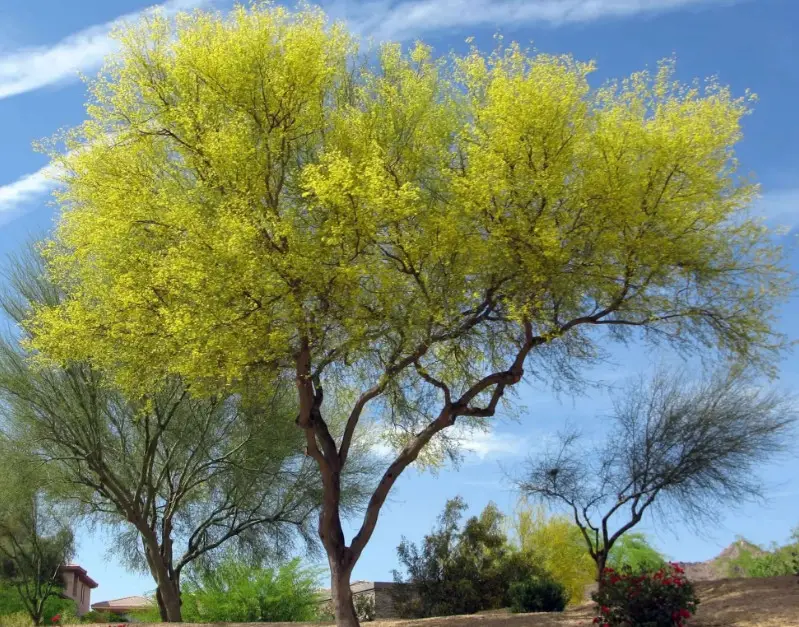
The Yellow Palo Verde (Parkinsonia microphylla), a large desert tree, is common in the Sonoran Desert, reaching about 16 ft. tall with yellowish-green foliage. It’s deciduous, shedding leaves in hot, dry seasons. Its green bark facilitates photosynthesis, enabling it to thrive in harsh desert conditions. Flowers bloom after rainfall, as with many desert plants.
Mojave Aster
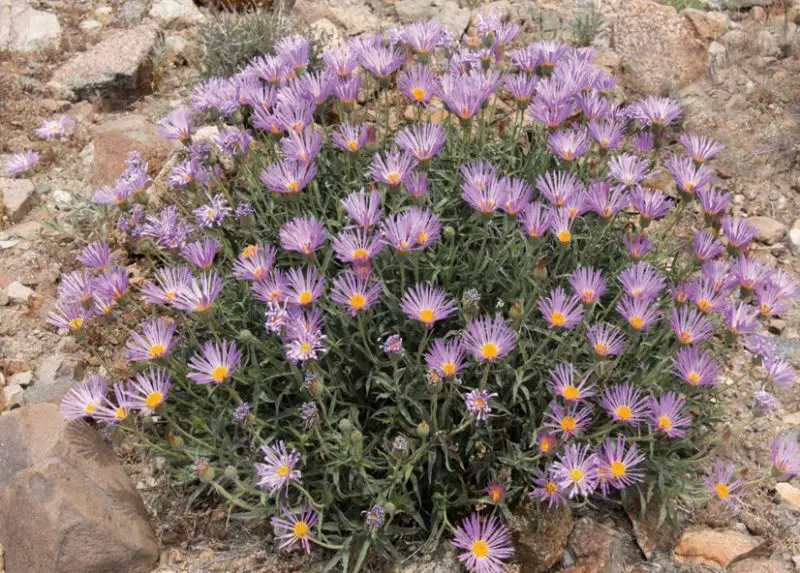
The Mojave Aster (Xylorhiza tortifolia), a striking desert flower, is native to the Mojave Desert, boasting large daisy-like blooms with lavender and white petals surrounding a yellow center. It thrives in the Sonoran and Great Basin Deserts, often found among Joshua trees, creosote bushes, and saltbush scrubs.
Jade Plant
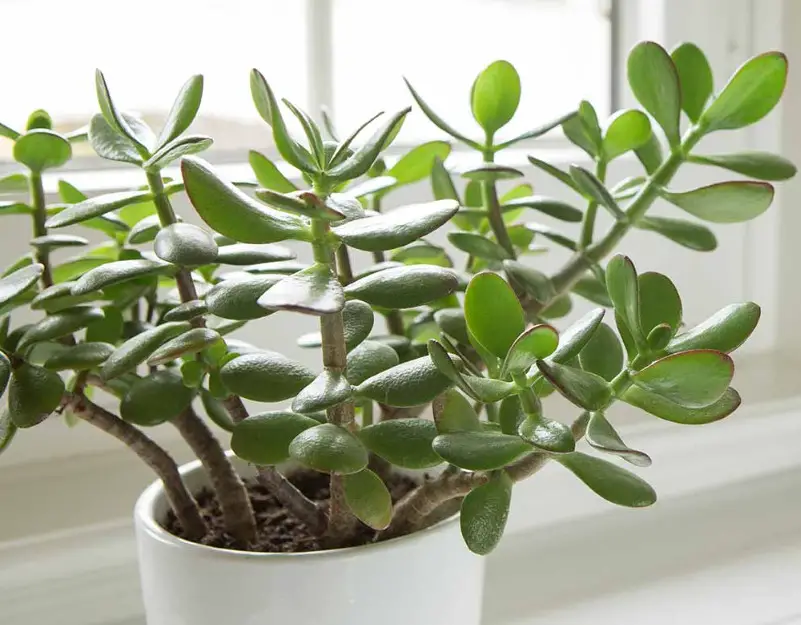
Jade plants (Crassula ovata), known as money trees, thrive in desert environments and make easy-care houseplants due to their tolerance for arid conditions. Requiring minimal watering indoors, they resemble miniature trees and prefer plenty of sunshine to thrive. Considered symbols of good luck, they’re often placed in auspicious locations indoors.
Yellow Bells
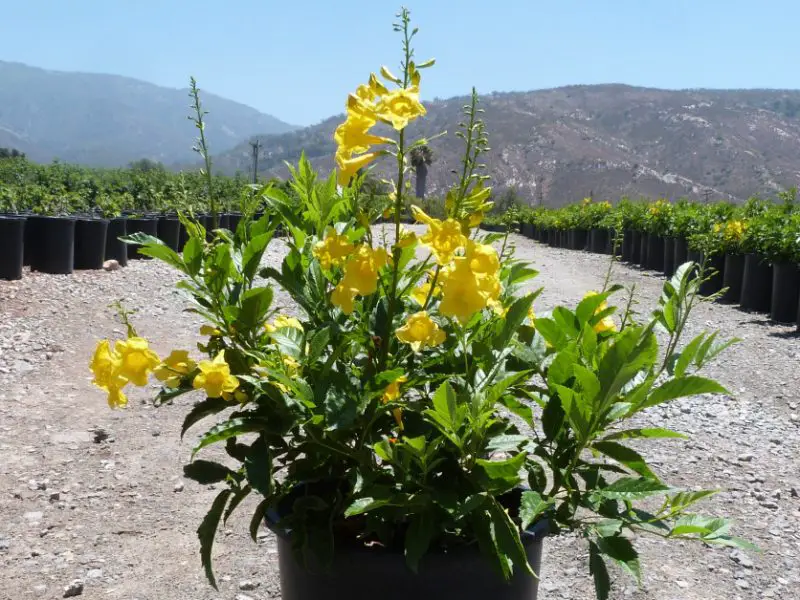
Yellow Bells (Tecoma stans), also known as yellow trumpetbush, is a drought and heat-tolerant desert shrub. Producing vibrant golden-yellow funnel-shaped flowers, its emerald green foliage transforms into a mass of yellow, making it an ideal choice for full-sun desert landscaping.
Prickly Pear Cactus
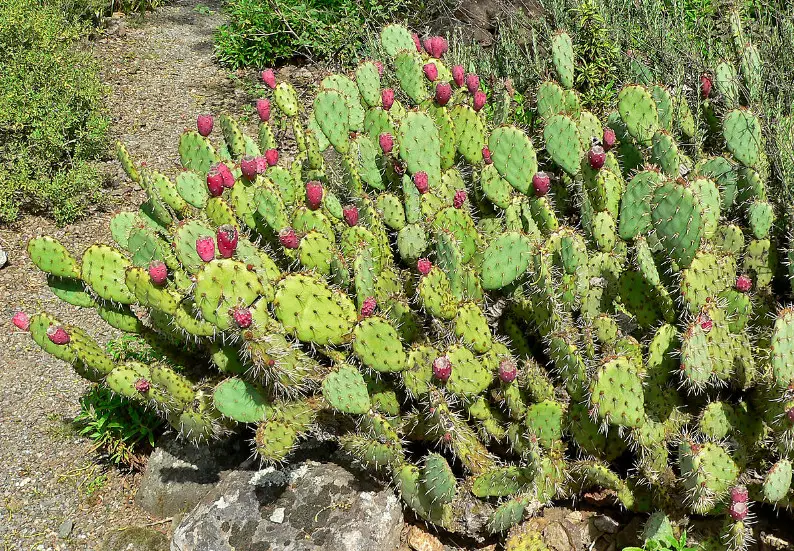
The prickly pear cactus (Opuntia), known for its pad-like leaves covered in spines, thrives in the Southwestern U.S. deserts. With fleshy leaves storing moisture, it survives harsh conditions, blooming vibrant yellow, purple, and red flowers, adding color to barren landscapes. Growing up to 23 ft., it resembles the rabbit ears cactus.
The Joshua Tree
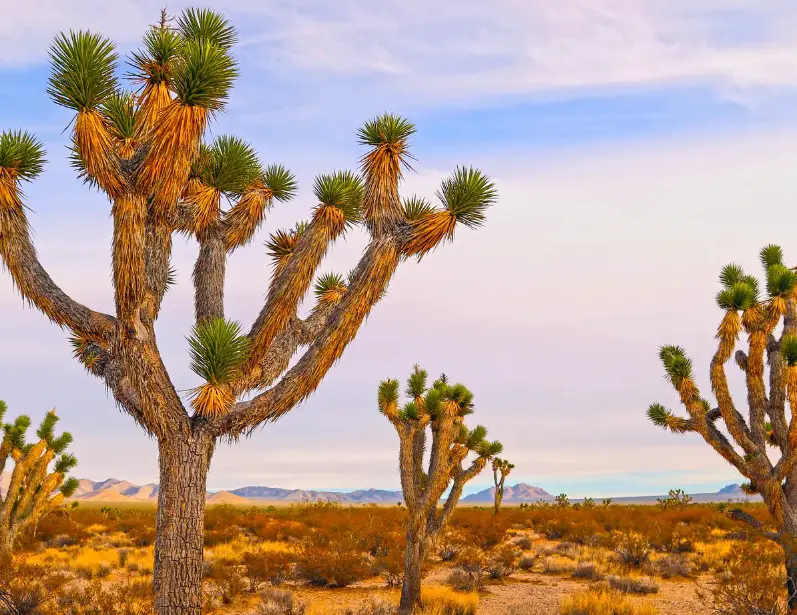
The Joshua tree (Yucca brevifolia), a yucca species found in the Mojave Desert, is also known as yucca palm or palm tree yucca. Native to several states, it can reach up to 50 ft. tall, thriving in arid conditions. With its large root system, it extracts moisture from the desert landscape. Its short, spiky green leaves grow in clusters atop thick branches, lending it a stark, barren look.
Curve Leaf Yucca
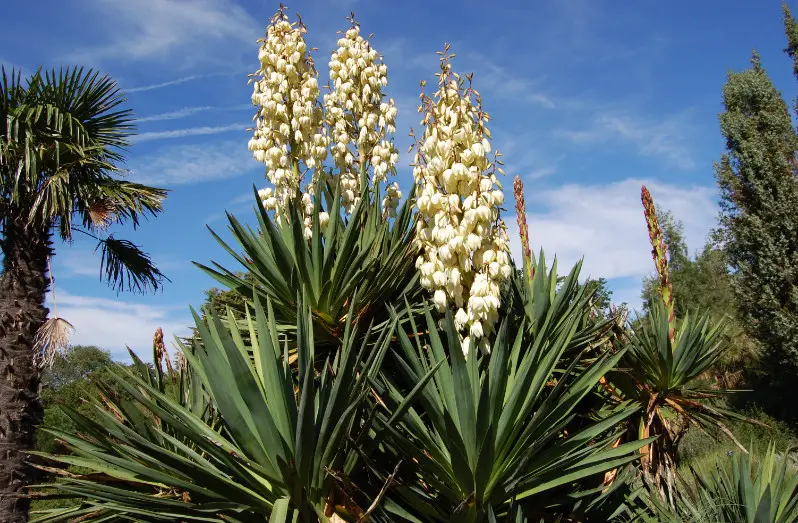
The Curve Leaf Yucca (Yucca gloriosa var. tristis), a desert plant commonly cultivated in the southern U.S., boasts lower leaves curving backward and upper leaves tapering to sharp points. Thriving in sandy soil and coastal dunes, it grows a thick trunk up to 4 or 5 ft. high and blooms with fragrant white flowers in large clusters.
Golden Barrel Cactus
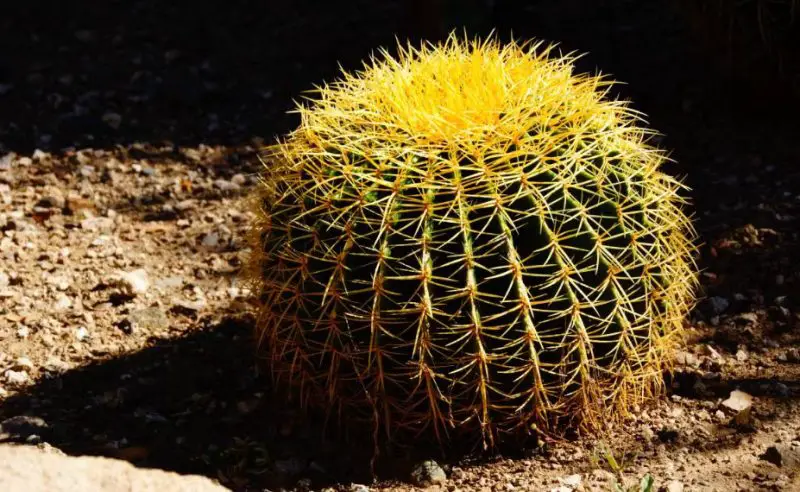
The golden barrel cactus (Echinocactus grusonii), resembling a large spiked globe, thrives in desert landscapes, boasting yellow or white spines and small yellow flowers. Slow-growing and long-lived, they reach up to 3 ft. in height and make stunning additions to rock gardens or desert landscapes, requiring sandy, well-draining soil and full sun.
Saguaro Cactus
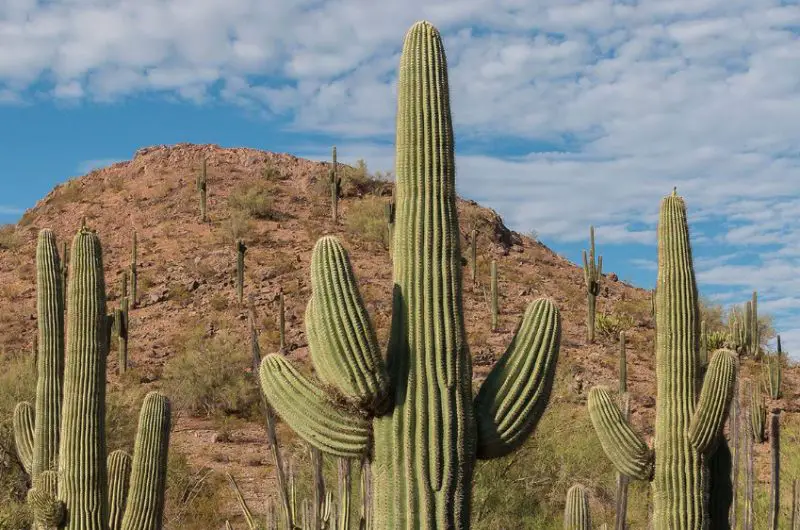
The Saguaro Cactus, or Carnegiea gigantea, stands tall in desert landscapes with its iconic arm-like branches. Thriving in the southwest and northern Mexico, it stores moisture in its thick stem to endure harsh conditions. Blooming from April to June, its large white flowers attract pollinators. While they can grow up to 52 ft., they are slow-growing and make striking additions to desert yards.
Organ Pipe Cactus
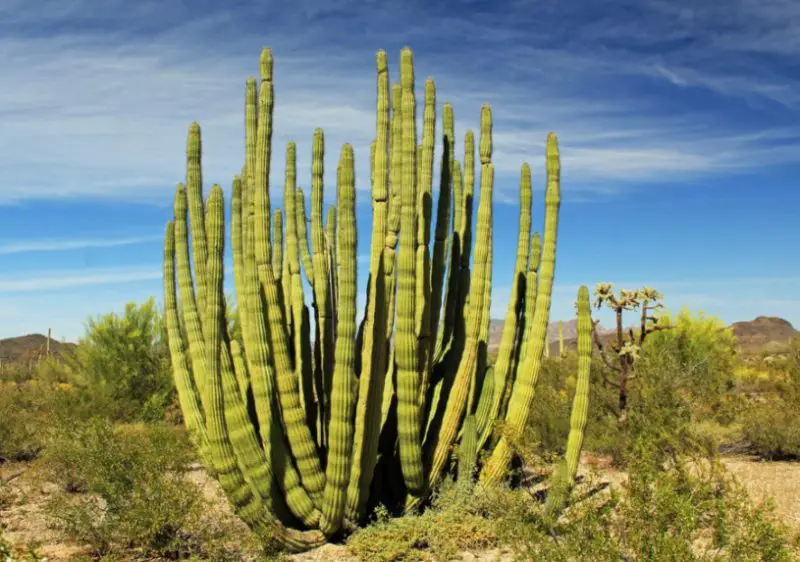
The Organ Pipe Cactus (Stenocereus thurberi), named for its tubular stems resembling a pipe organ, can grow up to 16 ft. with ribbed stems covered in sharp spines. Thriving in full sun and sandy, well-draining soil, they bear delicious fruits, highly regarded by desert dwellers. Native to the Sonoran Desert in Arizona and Mexico, they make excellent additions to drought-tolerant gardens.
Brittlebush
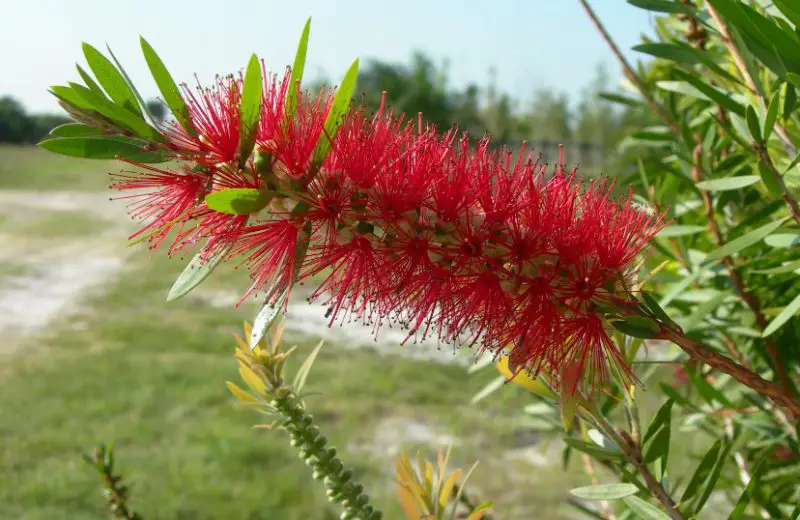
Brittlebush (Encelia farinosa), abundant in southern states and Mexico, features stiff, easily broken stems. Despite its name, it adds vibrancy to desert landscapes with clusters of yellow flowers atop dry foliage. During droughts, it sheds leaves, relying on stem moisture to endure the arid climate.
Creosote Bush
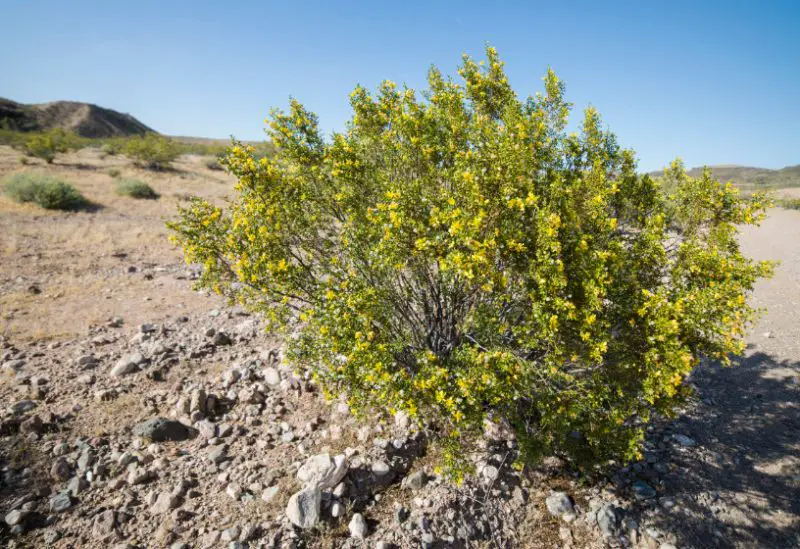
The Creosote Bush (Larrea tridentata), also known as greasewood, thrives in arid desert regions, boasting dainty yellow flowers and a robust root system for moisture absorption. Emitting a distinctive scent reminiscent of creosote compounds, it’s remarkably resilient, enduring temperatures up to 160°F and prolonged droughts.
Ghost Plant
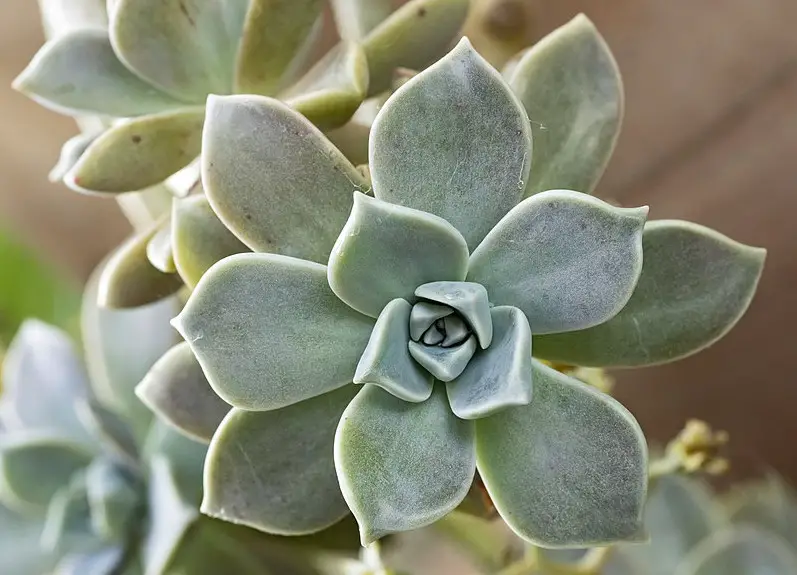
The Ghost Plant (Graptopetalum paraguayense), also known as mother-of-pearl plant or sedum weinbergii, is a succulent thriving in desert climates like Mexico. Its rosette-shaped succulent leaves give it a porcelain appearance, making it a popular choice for houseplants, rock gardens, or open terrariums, adding beauty to various settings.
Desert Palm Trees
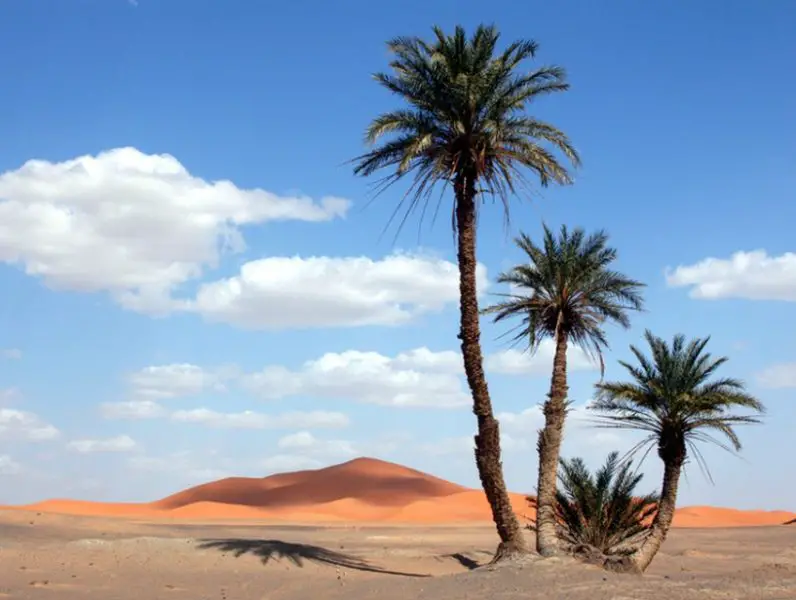
While desert palms evoke tropical imagery, many thrive in the arid climates of Arizona and the Southwest. Consider factors like sun exposure and humidity when selecting suitable palms. Examples include Acrocomia species, Bismarckia nobilis, Copernicia baileyana, and Ravenea xerophila, each suited to hot, dry conditions.
Torchwood Copal
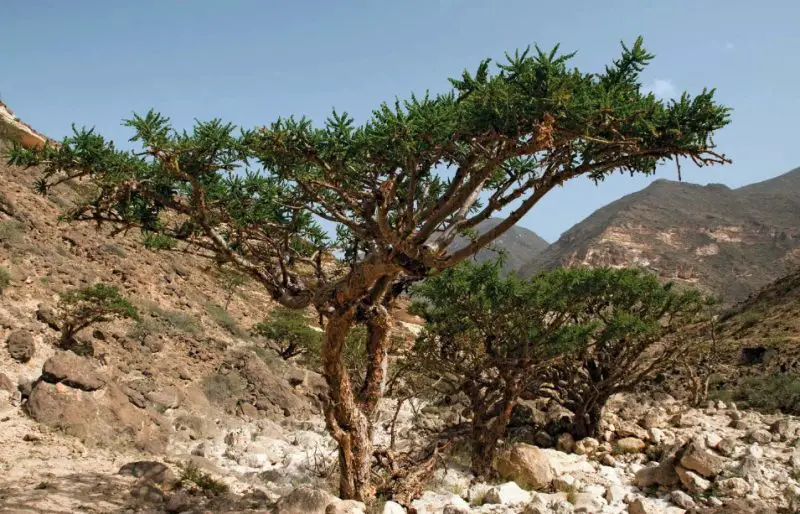
The torchwood copal (Bursera fagaroides), a desert shrub or small tree, boasts white flowers, red-tinged bark, and pinnate leaves. Thriving in arid regions, it’s prized for its aromatic resin and fast growth, reaching 10-32 ft. tall. With its attractive appearance and low maintenance, it’s an excellent choice for both indoor and outdoor cultivation.
Pencil Tree
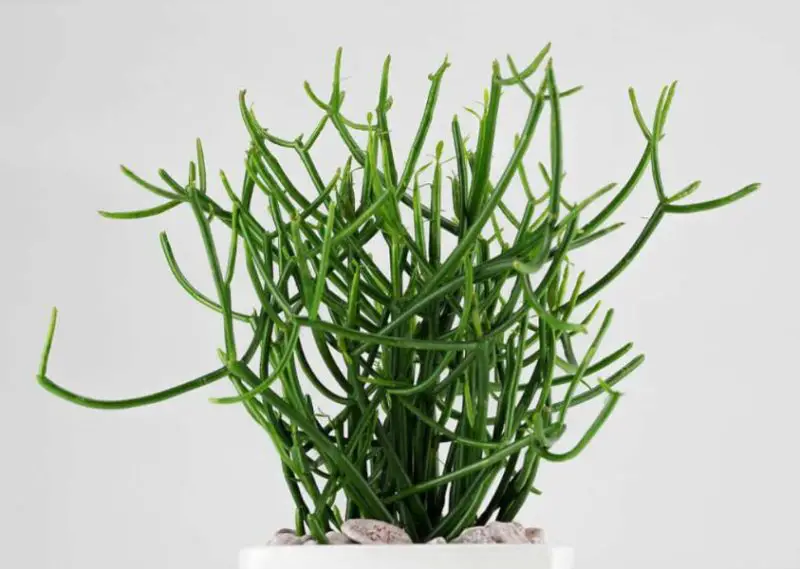
The pencil tree (Euphorbia tirucalli) thrives in semi-arid tropical climates, boasting tall branches, fleshy stems, and yellow flowers. Reaching heights of up to 23 ft., its succulent stems contain toxic sap. With its distinctive appearance and adaptability, it’s known by various names like fire stick tree or milk bushy.
Mexican Lime Cactus

The Mexican lime cactus (Ferocactus pilosus) features lime-green barrel-shaped stems adorned with orange-red spikes. It clumps together, and its cylindrical shape evolves over time. Adorned with vibrant red-orange flowers, it brings color and texture to arid landscapes, making it a popular choice for rock gardens, desert landscapes, or container gardens.
Coral Vine
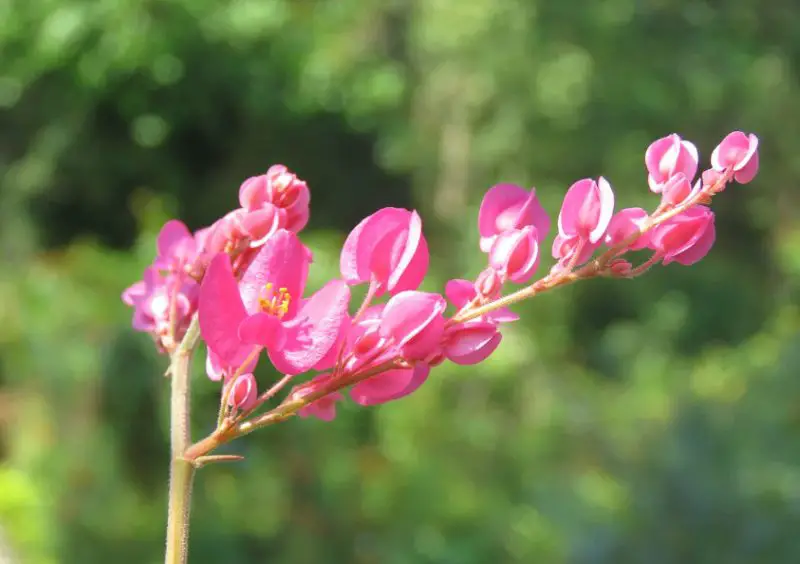
The coral vine (Antigonon leptopus), also known as queen’s wreath, is a charming vining desert plant boasting heart-shaped leaves and pink or white flowers. With its long trailing vines, it adds elegance to arid landscapes, ideal for cascading over fences, trellises, or as ground cover in sunny desert gardens.
Beaked Yucca
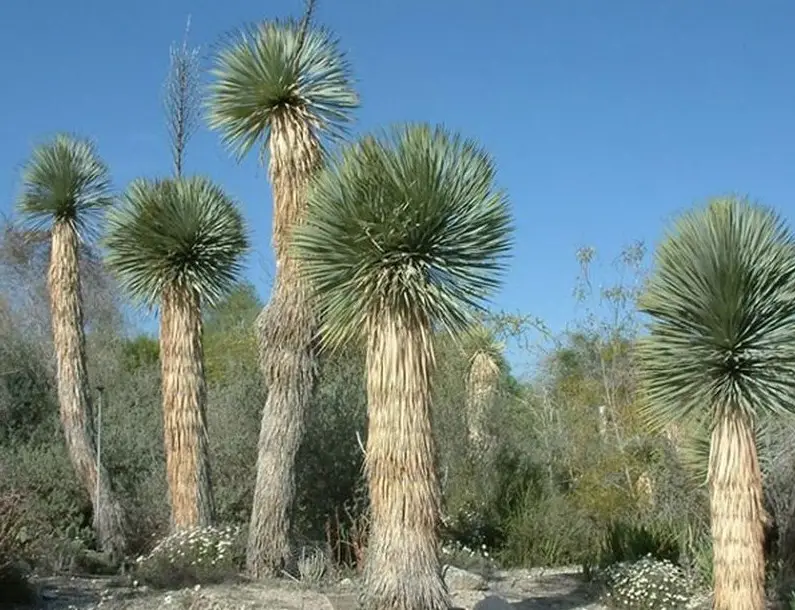
Beaked yucca (Yucca rostrata), a striking tree-like plant, sports a prominent spiky crown of blue-green leaves. With its tall stature and spring-blooming white flowers, it’s a standout in xeriscape landscapes, ideal for focal points or specimen trees.
Aloe Vera

Aloe vera (Aloe barbadensis), a succulent desert plant, flourishes in hot, arid climates. With fleshy leaves, it thrives in bone-dry, sandy soils. Over 500 aloe species exist, often growing in rosette shapes, including the common aloe vera. It’s suitable for indoor pot cultivation as well.
Texas Sage
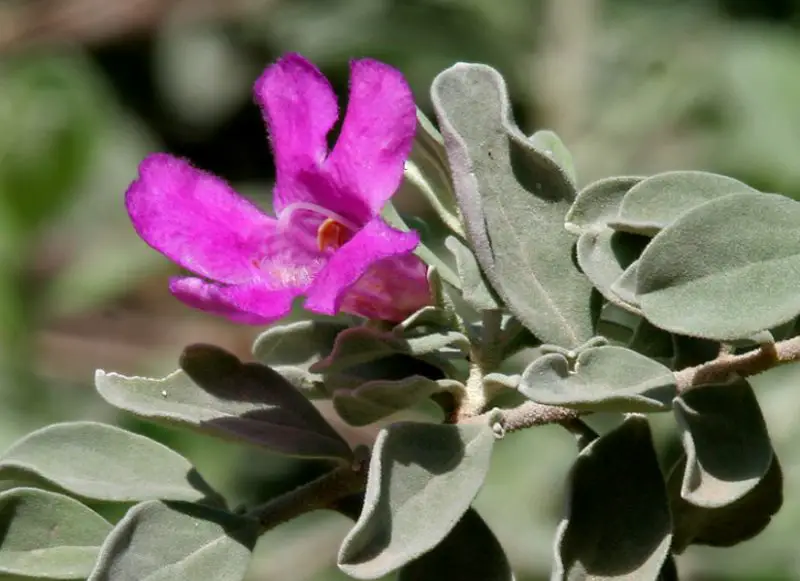
Texas Sage (Leucophyllum frutescens), also known as wild lilac or Texas Ranger, is a compact shrub native to desert regions. Despite its name, it’s not related to the herb sage. With purple flowers, it’s ideal as a specimen or border plant in desert landscapes.
Bottlebrush
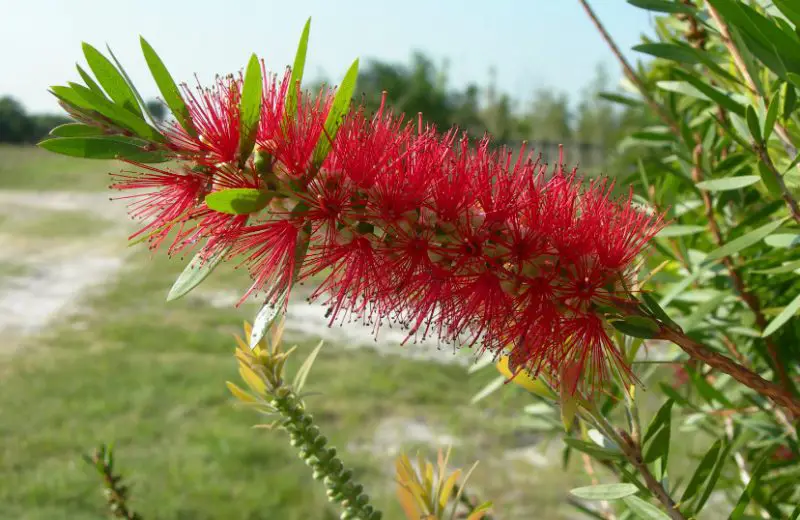
Bottlebrush plants (Callistemon), native to Australia, thrive in hot desert climates with minimal watering. Their small shrubs feature colorful red flowers contrasting with light green foliage, resembling bottle brushes.
Arizona Poppy Flowers
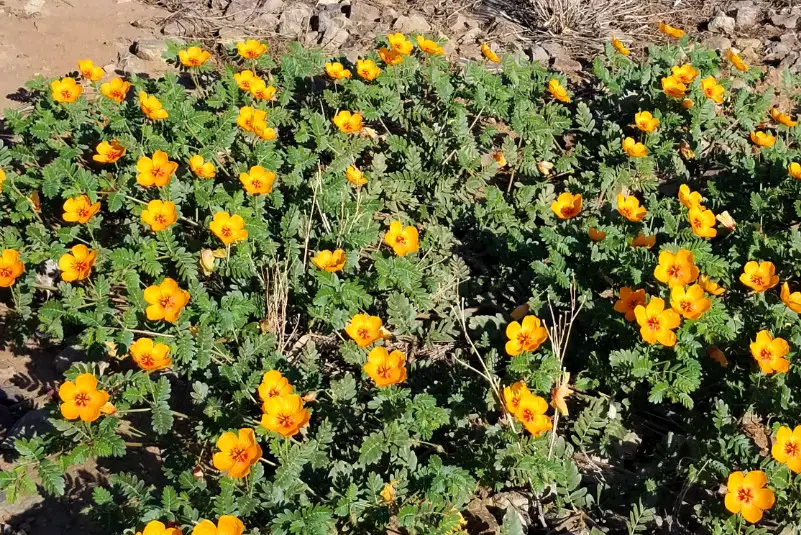
Arizona Poppy Flowers (Kallstroemia grandiflora), native to the southwestern United States, bloom with vibrant orange, yellow, or orange-red flowers after summer monsoons. Heat and drought-tolerant, they grow in bushy clumps, reaching 2-3 ft. tall and 5 ft. wide, with solitary flowers on wiry stems. Found in California, Texas, and other sandy deserts.
Marsh Aster
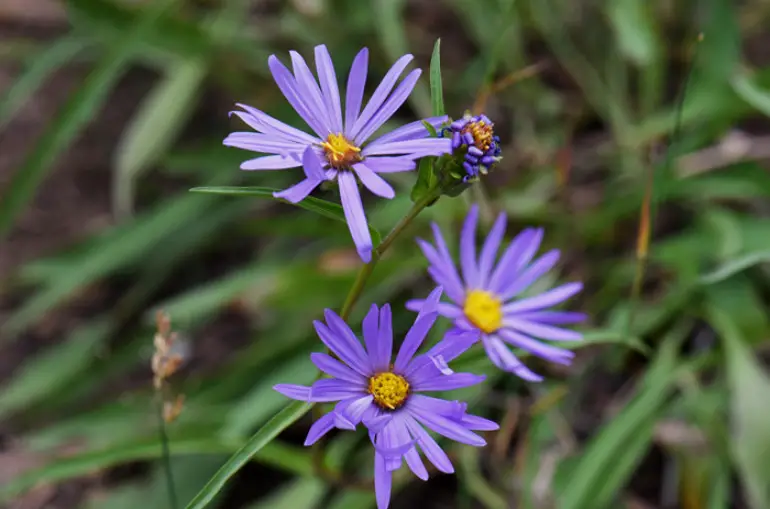
Marsh Aster (Almutaster pauciflorus), a perennial herbaceous plant, blooms with delicate purplish flowers resembling daisies. Thriving in sandy soils, it withstands drought. Flowering from spring to summer, it grows up to 47” tall and wide, featuring shrubby habit and multiple flowers per stem. Found in southwestern North America’s desert and dry areas.
California Poppy
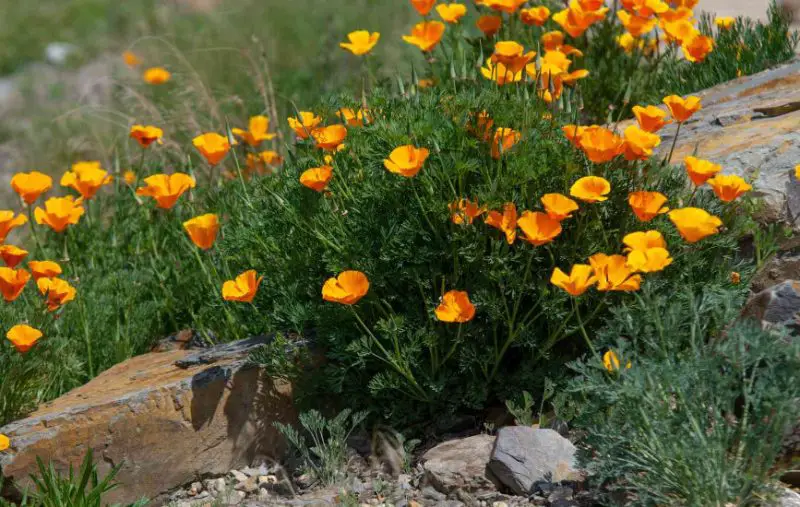
The California Poppy (Eschscholzia californica), also known as the golden cup, boasts vibrant orange flowers atop lush mounds of dark green foliage. Drought-tolerant, it grows 6-12” tall and wide, perfect for ground cover in USDA zones 8–10. This iconic flower is the state flower of California.
Desert Primrose
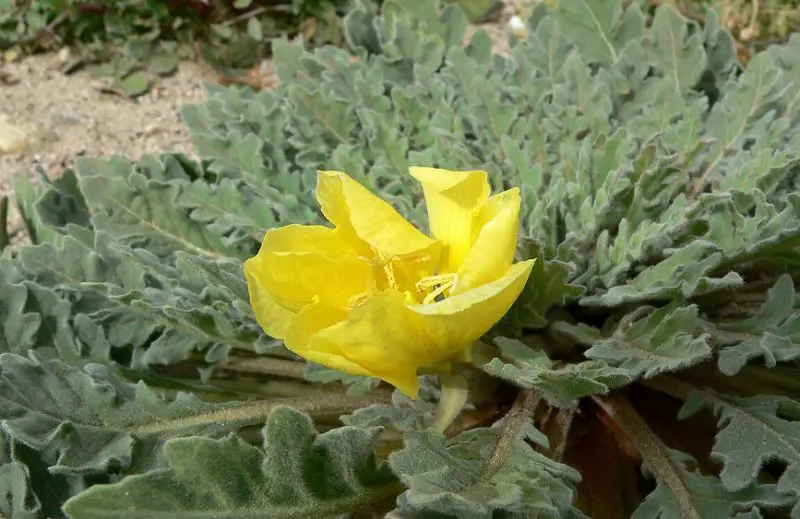
Desert Primrose (Oenothera primiveris), also known as birdcage evening primrose, features large, papery yellow flowers and sparse, pale green leaves. Thriving in open desert areas, it spreads and grows up to 18” tall and 40” wide. Found in Arizona, California, Utah, and Nevada.
Apache Plume
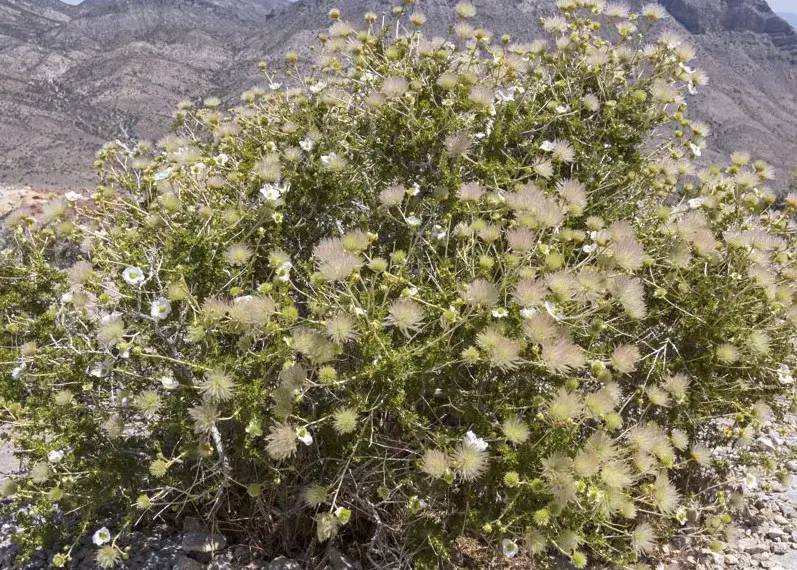
The Apache Plume (Fallugia paradoxa), a desert shrub, boasts dainty white flowers contrasting with bushy foliage. Native to the arid Southwest, it grows 3-6 ft. tall and wide, thriving in dry habitats and preventing soil erosion.
Devil’s Claw
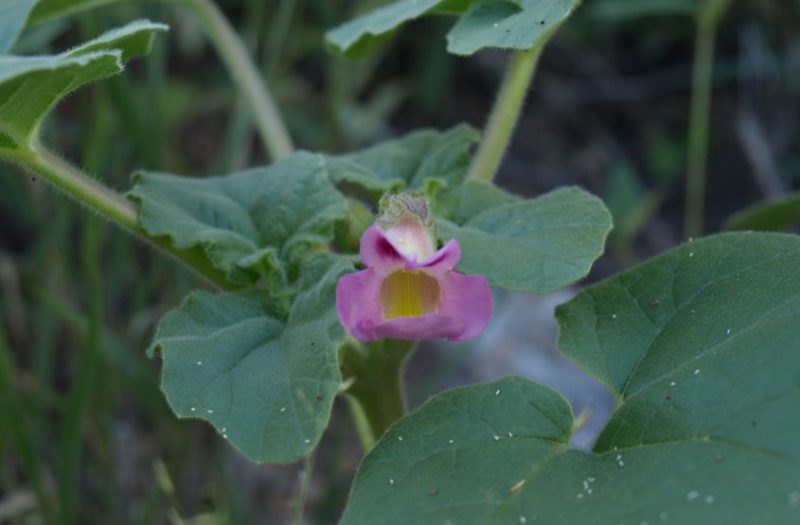
Devil’s Claw (Harpagophytum), a dark pink desert plant, features fragrant magenta flowers and heart-shaped leaves with wavy margins. Growing low to the ground, it spreads 24” wide, thriving in sandy, low-rainfall areas. Also known as the grapple plant, it’s not to be confused with other plants sharing the name.
Fairy Duster
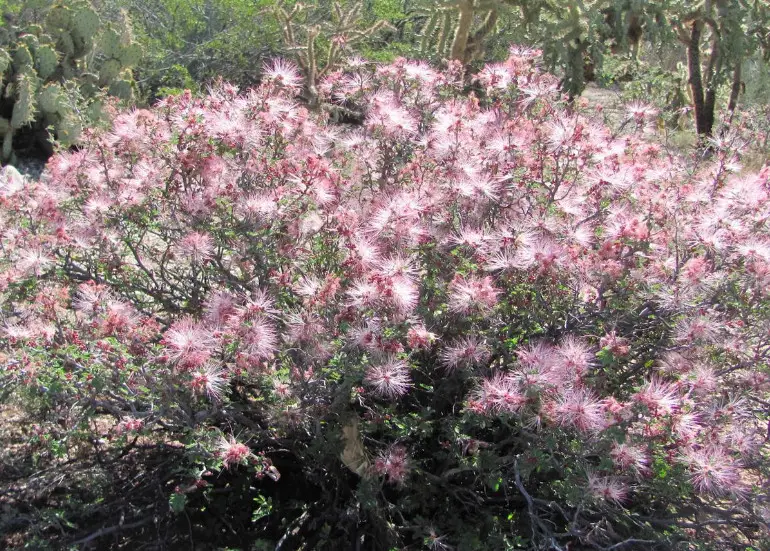
Fairy Duster (Calliandra eriophylla), an evergreen shrub native to deserts, features powderpuff-like pink and white flowers resembling feather dusters. With fern-like foliage, it grows low to the ground and blooms year-round, making it ideal for desert gardens as foundation plantings or accents.
Desert Mariposa Lily
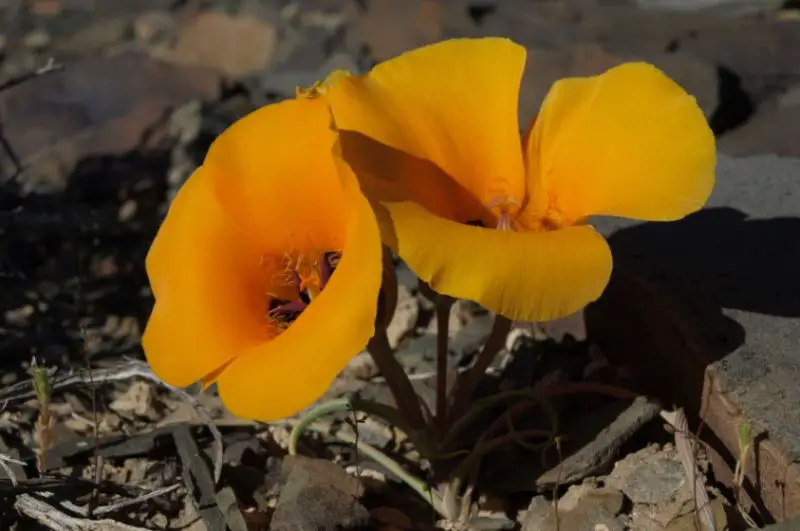
The Desert Mariposa Lily (Calochortus kennedyi), known for its stunning orange or yellowish blooms, features trumpet-shaped petals measuring 1” to 2” wide. With a spreading habit, it grows 2” to 18” tall and wide, adorned with thin gray leaves.
Chaste Tree
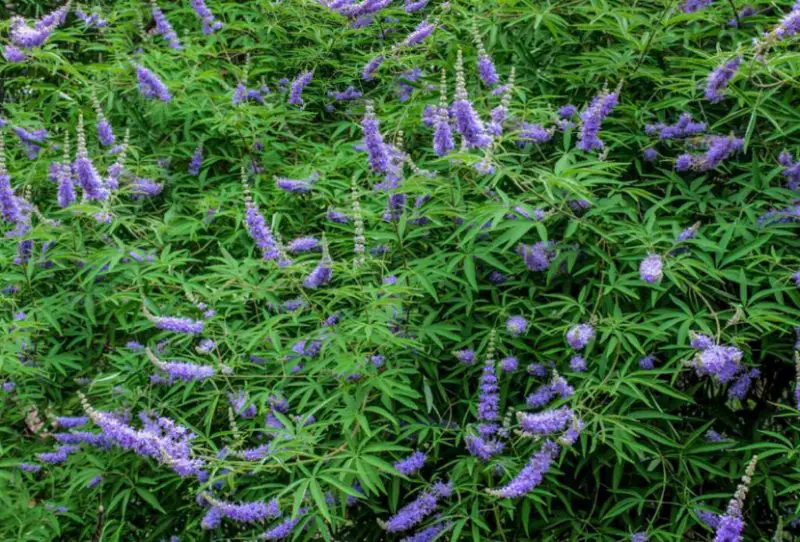
The Chaste Tree (Vitex agnus-castus), known for its fragrant lilac blooms and gray-green leaves, becomes a mass of purple and lilac colors when blooming in summer. Heat-tolerant and drought-resistant, it thrives in full sun, growing 3 to 16 ft. tall, with an upright habit and dense foliage.
Mulga
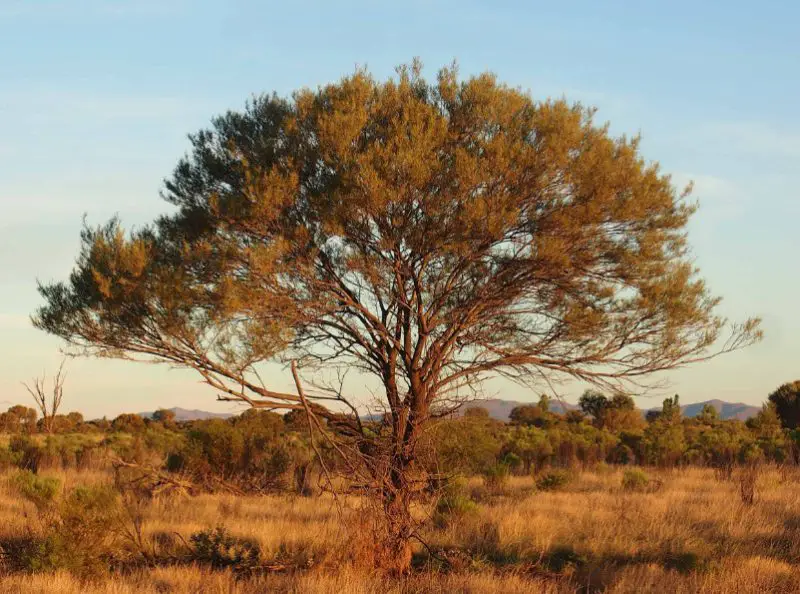
The mulga tree (Acacia aneura), characterized by its rounded, spreading habit and fuzzy yellow bottlebrush flowers, thrives in arid landscapes. With compact size and evergreen foliage, it’s ideal for desert gardens, offering year-long interest.
Anacacho Orchid Tree
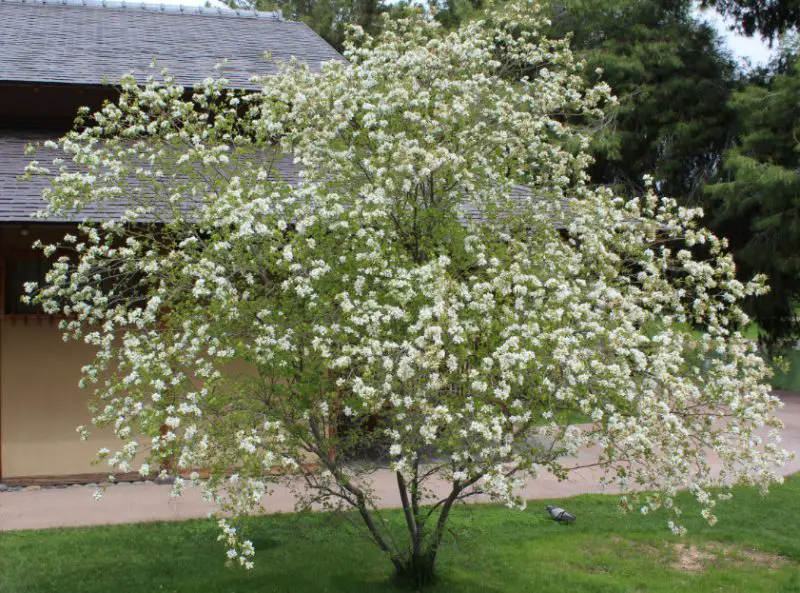
The Anacacho Orchid Tree (Bauhinia lunarioides), a semi-evergreen desert tree, showcases stunning white orchid-like flowers and bi-lobed pale green leaves. With silvery-gray bark and flattened seed pods, it grows 6 to 12 ft. tall, thriving in full sun and tolerating drought and poor soils. Its unique leaf shape and beautiful flowers make it an attractive addition to desert landscapes.
Cane Cholla
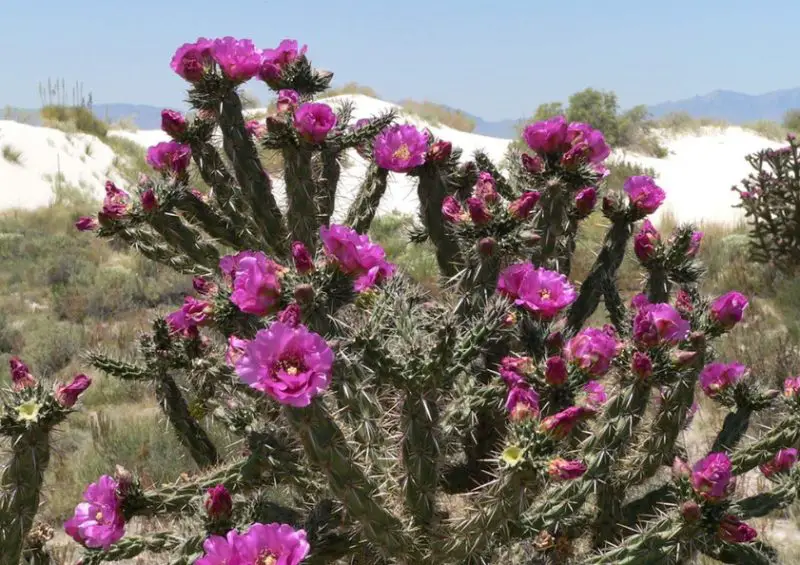
The Cane Cholla (Cylindropuntia spinosior), a striking native cactus, features spiny twisting stems and vibrant pink flowers. With rope-like gray-green stems, it grows 3-8 ft. tall, sometimes resembling a cactus tree. Its captivating appearance adds visual appeal to desert gardens.
Claret Cup Cactus

The Claret Cup Cactus (Echinocereus triglochidiatus) boasts erect blue-green stems adorned with sharp spikes and striking bow-shaped red flowers. With pink stamens and a nectar chamber, the flowers measure 3-4” long. Easy to cultivate, it grows 15-24” tall and 18-24” wide, adding allure to succulent or desert gardens.
Old Man Cactus

The Old Man Cactus (Pachycereus schottii), characterized by its thorny stems and large shrub-like form, features prominent ribs, white summer flowers, and red egg-shaped fruits. Growing up to 10 ft. tall and wide, it blooms during summer nights, earning the name “queen of the night.” Thriving in full sun and arid, well-drained soil, it’s a resilient desert plant.
Mexican Fencepost Cactus
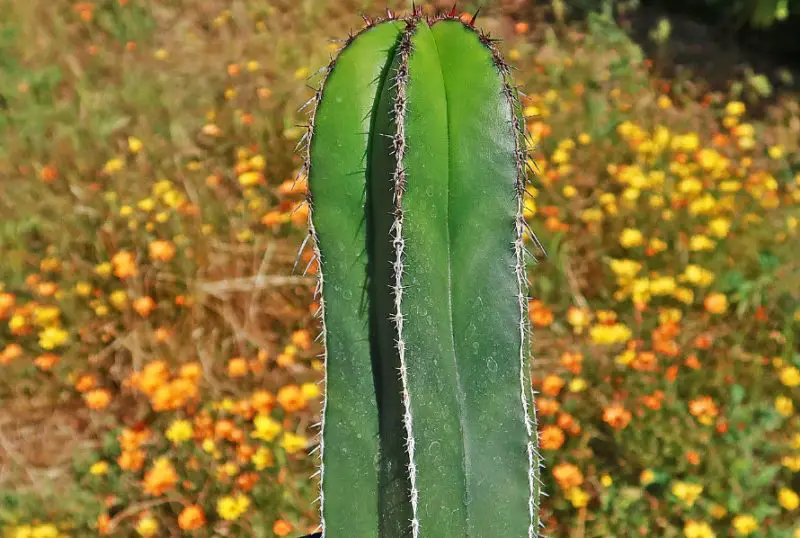
The Mexican Fencepost Cactus (Lophocereus marginatus), known for its stiff, spiny stems, produces large pink flowers and spine-covered fruits. Growing 10-15 ft. tall and 4 ft. wide, it’s perfect for arid landscapes, serving as a specimen or accent plant, or in mass plantings for natural security barriers or windbreaks.
Purple Poppy Mallow
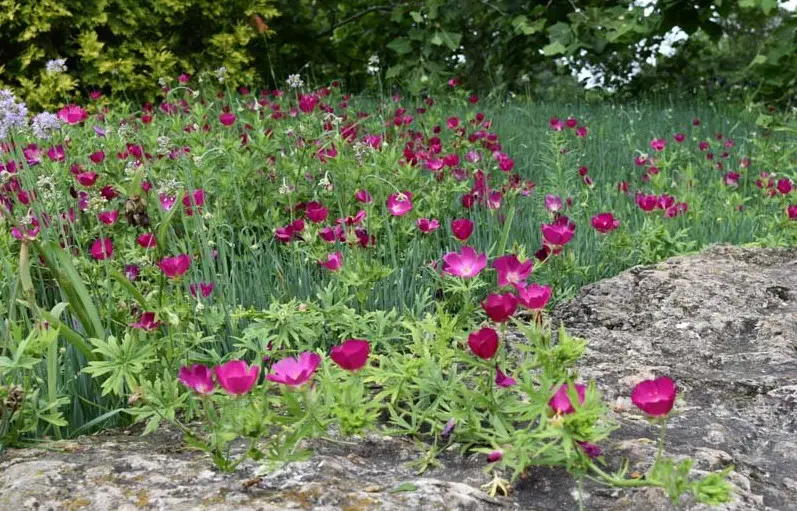
The Purple Poppy Mallow (Callirhoe involucrata), known as wine cups or buffalo roses, features magenta cup-shaped flowers contrasting with deep-green leaves. Drought-tolerant and low-growing, it’s ideal for foundation planting, borders, or cascading over retaining walls, growing 8-12″ tall and up to 35″ wide.
Purple Sage
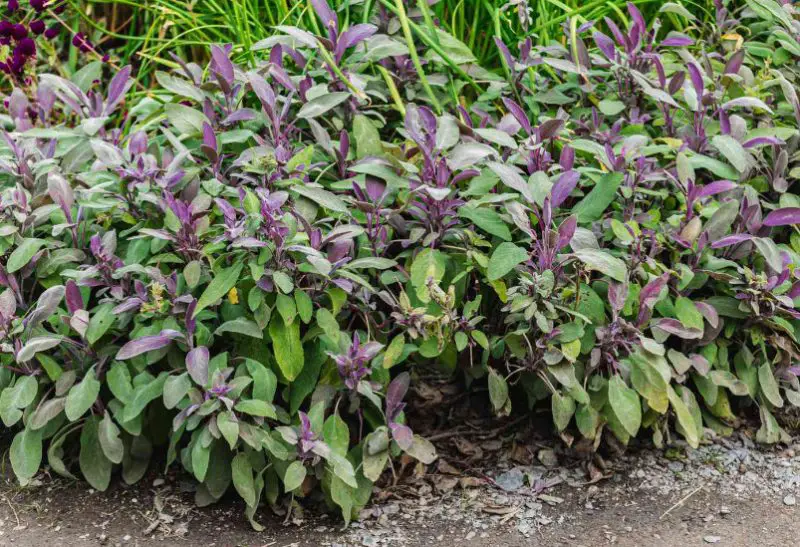
Purple Sage (Salvia dorii), or desert sage, is a low-growing shrub with deep blue-violet spikes contrasting against silvery-gray leaves. Thriving in arid soils, it’s ideal for borders, foundation planting, or ground cover in desert gardens, growing 1-3 ft. tall and up to 4 ft. wide. With minimal watering needs, it’s a resilient desert plant.






